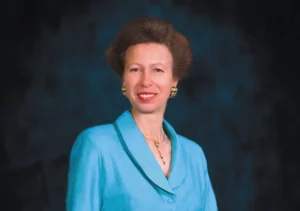About Royal British Legion

The Royal British Legion Women’s Section is a membership organisation for women which provides care and support to the Serving and ex-Service community.
For over 90 years, our distinct and specially tailored welfare schemes have helped thousands of men, women and children within the Armed Forces community, who are in financial hardship or in need of extra support.
Formed in 1921 to safeguard the interests of wives, widows and children of men who served in the Great War, we continue today to support those in need through educational sponsorship, grants and annuities. Our support services are available to the entire Armed Forces community; from service personnel and veterans to military spouses and children.
Our members play a key role in our organisation by fundraising throughout the year within their local branches and counties to finance the bulk of our welfare schemes – so it’s only with their on-going support and generosity that we can continue to deliver our support services to those in need.
In addition, we also support the Legion’s annual Poppy Appeal from mid-October to mid-November with all fundraising going directly to The Poppy Appeal rather than The Women’s Section welfare schemes.
In return for our members’ support, we play a unique role in providing them with the chance to build new skills and participate in a variety of social activities and events with other like-minded women. Members can volunteer to become a Branch or County Committee Member, represent the Women’s Section as a Standard Bearer, become a Caseworker, assist the Legion’s Poppy Appeal as a Poppy Collector and attend national events including the annual Festival of Remembrance and The Women’s Section’s Annual Conference.
Our History
The Royal British Legion came into being in July 1921 as a result of the amalgamation of the four great ex-Service organisations. Soon after the First World War, these four organisations quickly acknowledged that if any real progress was to be made to improve the basic needs of the many thousands of disabled ex-Servicemen who returned after the war, they stood a greater chance as one combined force. At a Conference convened on the 14th May 1921, the British Legion was thus born with Field Marshall Earl Haig becoming the first President and Mr T.F. Lister as Chairman.
It was also decreed at the time that women would not be eligible for ordinary membership but that a separate Women’s Auxiliary should be set up – and so the ‘Women’s Auxiliary Section of the British Legion’ was established – with the specific purpose of safeguarding the interests of the widows, dependants and families of men and women who served in H.M. Forces, as well as widening the activities of the British Legion.
At the first Conference of the Women’s Auxiliary Section held on the 20th July 1921, a provisional committee was agreed upon and Countess Haig became the President. Lady Robertson, wife of Field Marshall Sir William Robertson, became the first National Chairman. In November of that year, HRH Princess Mary, The Princess Royal, consented to become Patroness, a position she held until her death in 1965.
At a Legion Conference in July 1922, a further Resolution was proposed that the Constitution be amended to allow ex-Servicewomen to be admitted to ordinary membership of the Legion on equal terms with the men. As a result, the world ‘Auxiliary’ was amended to ‘Section’ and thus the British Legion ‘Women’s Section’ was born. A further amendment to the Bye-Laws accepted that ex-Servicewomen could be members of a British Legion Branch as well as a Women’s Section Branch. It was at this same Conference that HRH Princess Alice, Countess of Athlone became President, Lady Edward Spencer Churchill was unanimously elected Chairman, and Lady Grant, Vice-Chairman.
Almost from a standing point, the Women’s Section has had to build itself up, unlike the Legion who already had a large number of fully established branches transferred during the amalgamation period. However, it soon became clear that many women were willing and eager to band together to care for the welfare of widows and children of World War I victims, as well as presiding over the wellbeing of the ex-Service community as a whole. By the end of 1922, branches had reached 126 with a total of 2,215 members.
Royal British Legion
Status of The Women’s Section in the Royal British Legion
The Women’s Section exists within the wider Royal British Legion alongside other RBL formations, in accordance with Article 7 of the Royal Charter. Membership of the Women’s Section is currently separate to the rest of the Royal British Legion, but will be completely in line with the rest of the organisation for October 2019. The membership is looked after by the Membership Support Officer, processing all applications and renewals. The Women’s Section has a separate Benevolent Fund and separate welfare schemes. One of the most important aims is to promote the welfare of widows, Service and ex-Service personnel and their dependants. The Women’s Section welfare schemes are looked after by the Royal British Legion Central Grants Team.
The Poppy Appeal
The Poppy Appeal is part of the fundraising division of The Royal British Legion. It raises almost half of the money needed by the Legion’s benevolent fund and takes place in late October and early November.
For many years Legion members and particularly the Women’s Section, have played a vital role in the Poppy Appeal. To these people the appeal is not just a fortnight in the Winter; fundraising is a year-long activity. There are many ways in which this has been achieved: holding events, organising home collections, arranging static collections and, particularly, observing the convention of the “Closed Period”. This Closed Period is the month that runs from 14th October until 14th November each year when the proceeds of all fundraising events held by counties, branches and clubs within the Women’s Section are diverted to The Poppy Appeal rather than The Women’s Section Benevolent Fund.
Organisational Structure
The Women’s Section is part of the Royal British Legion, looked after by a Central Committee comprising two National Officers and 12 regional representatives. The Central Committee meets quarterly and is responsible to the Board of Trustees via the Membership Council and to Branches and members for the management of the Women’s Section. Head Office staff provide adminstrative support to the Central Committee.
Each Central Committee Member represents a regional membership area and it is their duty to project the views of counties and branches within their region and advise them on all relevant matters of business. It is then the responsibility of County Officers to pass on the information received from the Central Committee to Branch Secretaries within their own County.
National Officers

National Chairman – Pat Chrimes
President

Her Royal Highness Princess Anne is President of the Women’s Section
Head Office Address
The Royal British Legion Women’s Section Haig House 199 Borough High Street London SE1 1AA
Contact Centre: 0808 802 8080 (open 7 days a week, 8am to 8pm)
Email: [email protected]









